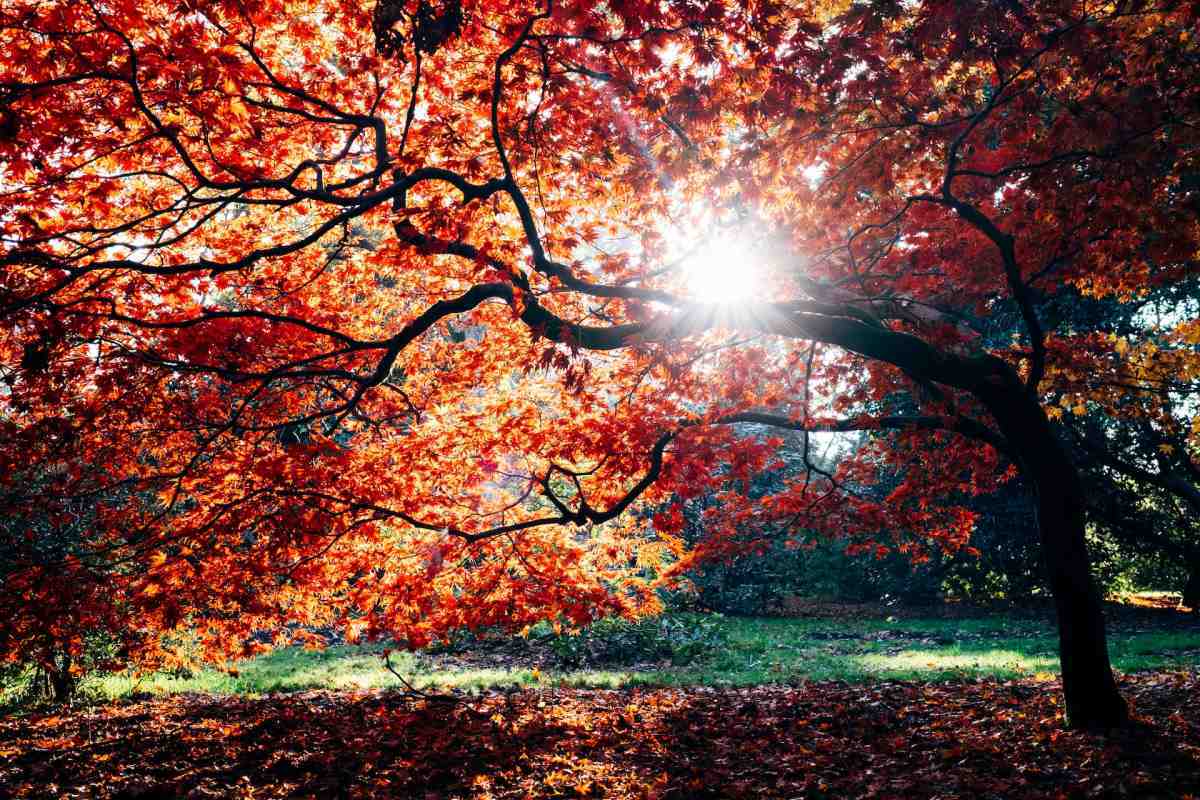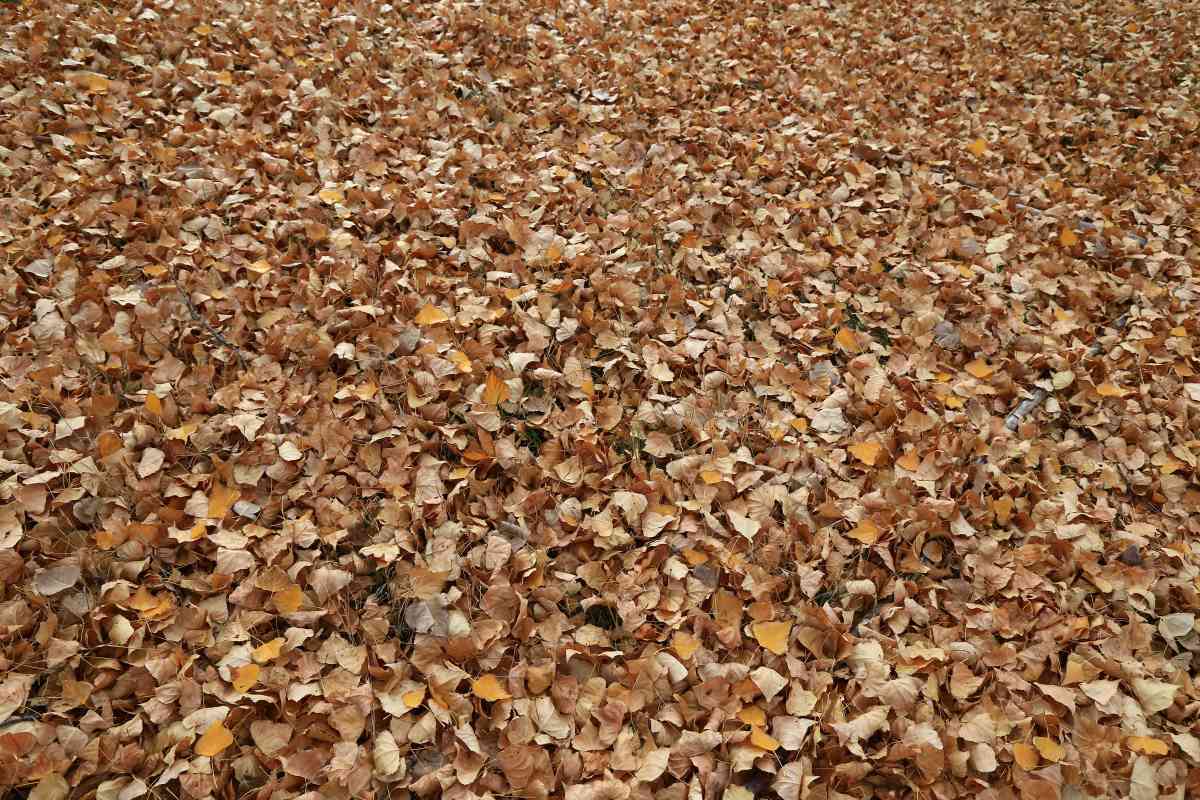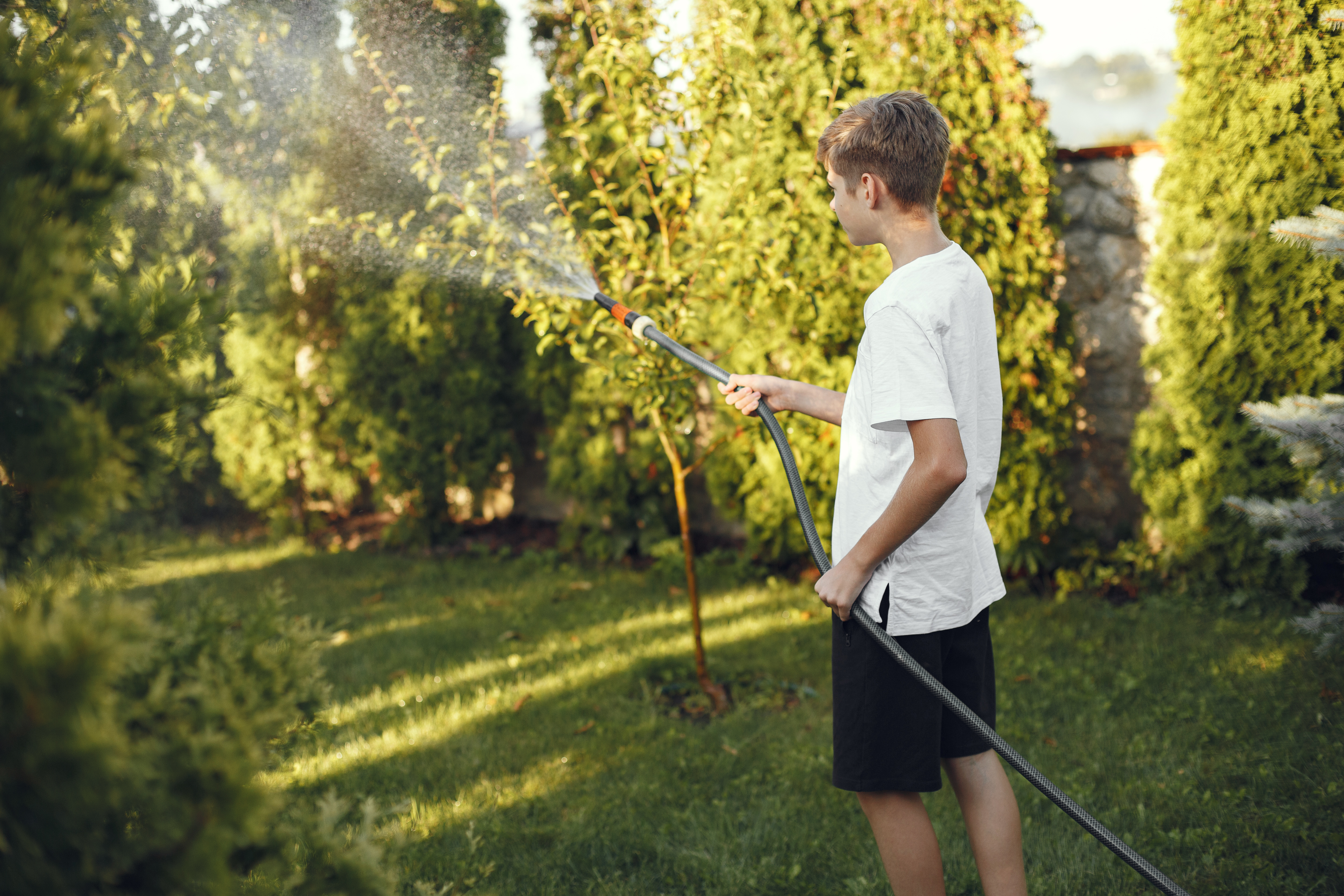Fall Tree Care Checklist: 5 Things You Need to Do
Reading time: 8 minutesAs the heat of summer gives way to fall colours, trees undergo a remarkable transformation. Chlorophyll production decreases as the days get shorter, while the crisp autumn air and falling leaves signal the need to switch to fall-specific tree maintenance.
But what exactly do trees need during the transition from summer to fall? Check out these top fall tree care tips, how to prepare your trees for the upcoming winter, and what to do now to pave the way for new spring growth.
Why Fall Tree Care Is Important
Fall tree maintenance is an essential investment in the long-term health of your trees. Now is the time to prepare your trees for winter’s harsh conditions. Putting it off could mean severe damage to your property or trees, even leading to tree death.
Proper care of your trees during the fall helps protect them from irreversible snow and ice damage and sets the stage for more significant growth in the spring. For your trees to flourish year-round, you need maintenance strategies that reflect the seasonal needs of your trees. This is especially important in the transition from fall to winter.

5 Tips for Fall Tree Care to Follow Now
Your trees boost the aesthetics of your yard, keep outdoor spaces cooler, and help the environment, so they require regular maintenance to remain healthy. The best approach to comprehensive tree care is combining professional services with at-home assistance where it makes sense (like watering trees).
We’ve put our top 5 tips for fall lawn care into the list below. To help your trees overwinter successfully, you can do the following:
1. Rake the Leaves
While colourful autumn leaves blanketing the ground around your trees might look picturesque, they can cause many problems. A thin layer of leaves is okay, but the more that accumulate, the less sunlight can reach your grass. You could start seeing patches of dead or weakened turf. From there, trapped moisture underneath may encourage the growth of mould, fungi, and disease.
Start from your yard's outside perimeter and work toward the center when raking. You can carve out small sections and use a sturdy rake to push or pull the leaves into manageable piles. From there, you’ll want to collect the leaves into large plastic bags for disposal or collect them on a tarp that can be pulled away. They can also be mulched or composted if you have the tools or rent them. Mulching leaves is a great way to provide ground cover and add nutrients back to your lawn.
And if you have fruit trees, pick up anything that falls on the ground regularly to prevent rotting around the tree's base.
2. Prune Your Trees
Autumn is the perfect time to prune your trees as they redirect their energy from leaf production to root development. As the trees go dormant, they have a better chance of healing, so they can come back stronger once the growing season begins the following year.
Pruning in the fall is also good because as the leaves fall, you can better see the underneath of the tree and its condition. Doing this earlier in the fall is the best because if it’s too close to the first frost, you could risk permanent tree damage. Dead and overgrown branches can be removed before winter to keep disease at bay and prevent them from breaking under heavy snow.
We recommend hiring an expert team to handle tree pruning because trained professionals understand best practices, know how much to take off, and have access to better equipment that makes it easier and safer for them to prune.
3. Mulch and Fertilize
Fall is also a great time to mulch. Mulching looks excellent and can help your trees become healthier and more resilient. It also:
- Insulates the soil. A layer of mulch provides a buffer between a tree's root system and cold weather aboveground, protecting the roots from becoming exposed or desiccating, which is when trees lose more moisture through their leaves than they can take up from frozen soil.
- Retains moisture and acts as a barrier against weed growth. Weeds compete with trees for nutrients and water, which become scarcer during the winter. Mulch is difficult for weeds to grow in and helps retain soil moisture, preventing the ground from drying out.
- Enriches the soil. As the mulch starts breaking down, it enhances the surrounding soil with nutrient-rich organic matter and helps your trees fill out more in the spring and summer.

It is crucial not to Over Mulch (sometimes called Volcano Mulching) while preparing your trees for the winter. Too much mulch can suffocate the roots of your trees or lead to a build-up of precipitation that leads to mould.
4. Check for Pests and Disease
When the growing season ends, many common pests and pathogens become more visible on the surface of trees. The Invasive Species Centre mentions that emerald ash borers and Asian longhorn beetles are significant threats that can defoliate hardwood trees and feed on fruit crops. Native species, like forest tent caterpillars, are also problems around your trees.
During the fall, it’s easier to identify and address issues because less foliage obscures the view of your trees. You can also have a certified arborist come and complete a pest inventory to ensure your trees are safe for the winter. Taking these steps before winter can help prevent problems from spreading and intensifying throughout the dormant season.
You might not see the full effects of neglecting your tree care now, but they may become more apparent as your trees grow. By then, there may be more damage that can’t be reversed. The saying “an ounce of prevention is worth a pound of cure” is especially true regarding fall tree care.
5. Don’t Forget to Water
Even though your trees don't require as much water in the fall as they do during a hot summer, they still need enough moisture to maintain their health and prepare for a long, cold winter. Strong roots help trees withstand winter stresses, so it's vital to do what you can ahead of the snow and ice to protect delicate root systems from potential damage.

Watering your trees generously helps them deepen their roots before the ground freezes, allowing them to stock up on moisture and nutrients before the dormant season. When you do this, the soil can absorb the moisture without waterlogging. Don’t forget to pay attention to your local climate, soil type, and tree species since these can influence the frequency and amount of watering you'll need to give them.
Frequently Asked Questions (FAQs) About Fall Tree Care
What is the best season to plant a tree?
The best season to plant a tree is usually during the dormant late fall periods after the leaves have dropped. With cooler temperatures comes increased soil moisture, allowing newly planted trees to establish more robust root systems before winter.
What tree turns red in the fall?
Canada’s national tree and its most beloved, the sugar maple, gets red from anthocyanin, a water-soluble pigment already present in the leaves and is revealed in the fall when green chlorophyll fades. According to the Nature Conservancy of Canada, environmental cues like temperature fluctuations and light exposure trigger the production of these pigments, and colder, sunnier days produce the most vibrant red hues.
What is tree topping?
Tree topping or tree lopping is often done in the fall, along with pruning, but these two activities are very different.
Topping involves removing large portions of a tree's crown, which is thought to reduce the height or size of a tree that looks like it's getting too large too fast. But this causes many more problems than it solves because you can remove more than the tree's needs for photosynthesis and ultimately reduce its expected lifespan.
Pruning, as mentioned above, only removes dead, diseased, and overgrown branches, which is beneficial to the health of the tree rather than detrimental.
What is compacted soil?
The soil around your trees can become hard and densely packed due to repeated foot traffic, heavy machinery, and other activities that tightly compress soil particles. This reduces the natural pore spaces in the soil, limiting the amount of air, water, and nutrients that can get to the tree's roots.
Small Farm Canada suggests compacted soil lacks proper aeration and cannot allow water to infiltrate and drain effectively. This causes root systems to remain shallow and underdeveloped, preventing the photosynthesis of trees. It can also lead to water runoff, flash flooding, and soil erosion.
What do I do if leaves start falling prematurely?
If the leaves on your trees start falling before they should, this could be a sign of stress or an underlying tree health issue. You must address this issue promptly to protect your tree from further damage. Drought, disease, pests, root rot, rapid temperature fluctuations, and extreme weather events often cause premature leaf drop.
You should eliminate these potential causes by watering your tree, checking for soil compaction and poor drainage around the tree's roots, and fertilizing your trees in the case of a nutrient deficiency. If your trees are still experiencing problems, it's time to consult a professional arborist.
Call Green Drop for Professional Fall Tree Care Today
At Green Drop, we strive to provide the highest quality professional tree maintenance. Whether you need fall tree care, planting and pruning help, or diagnosis and treatment of tree disease, our team of experienced arborists understands the best ways to care for your trees – regardless of the season.
Contact us today to learn more about how to get your trees ready for fall and winter or to schedule a time for us to come to you and assess your situation.

